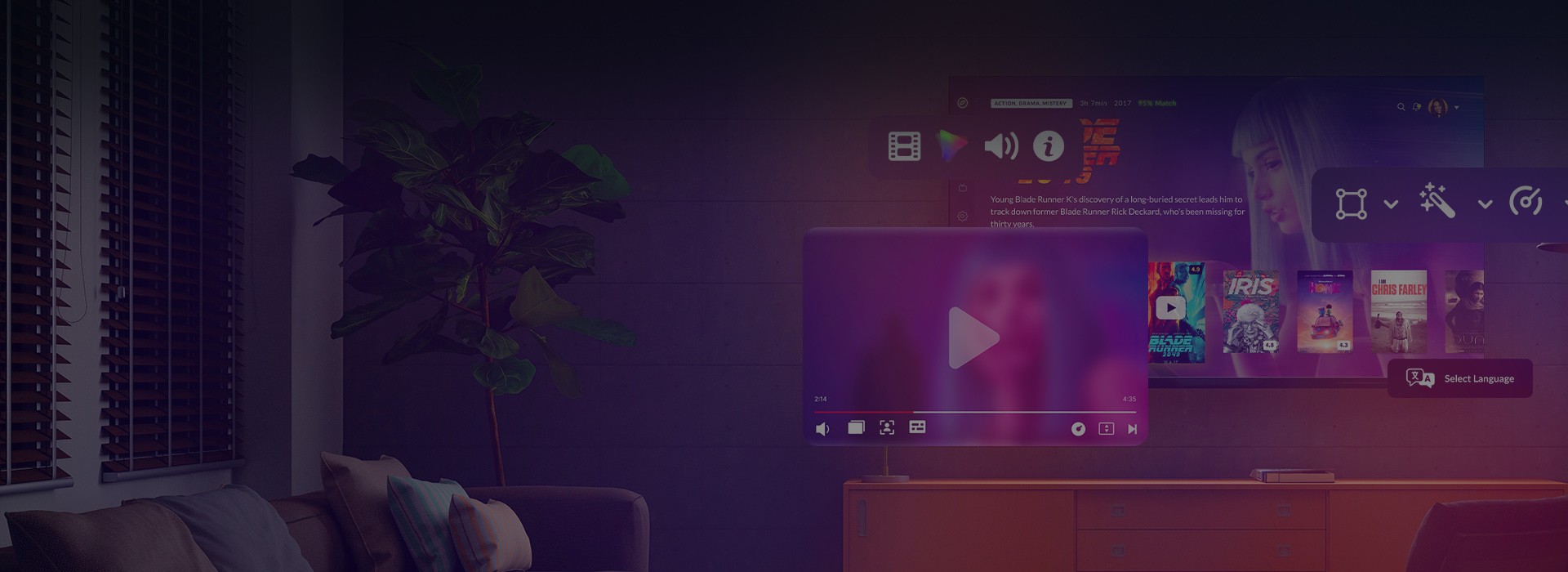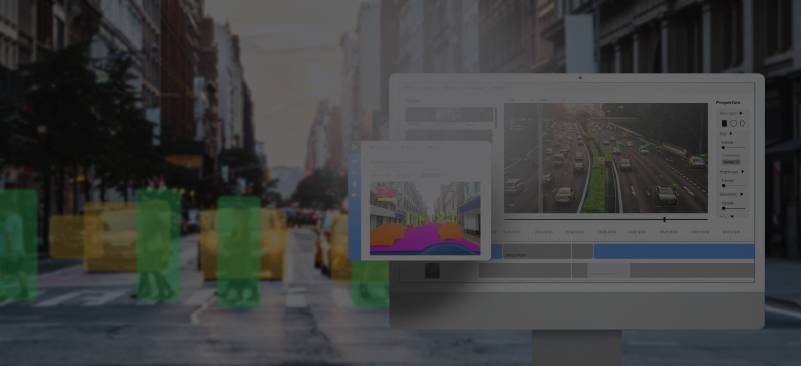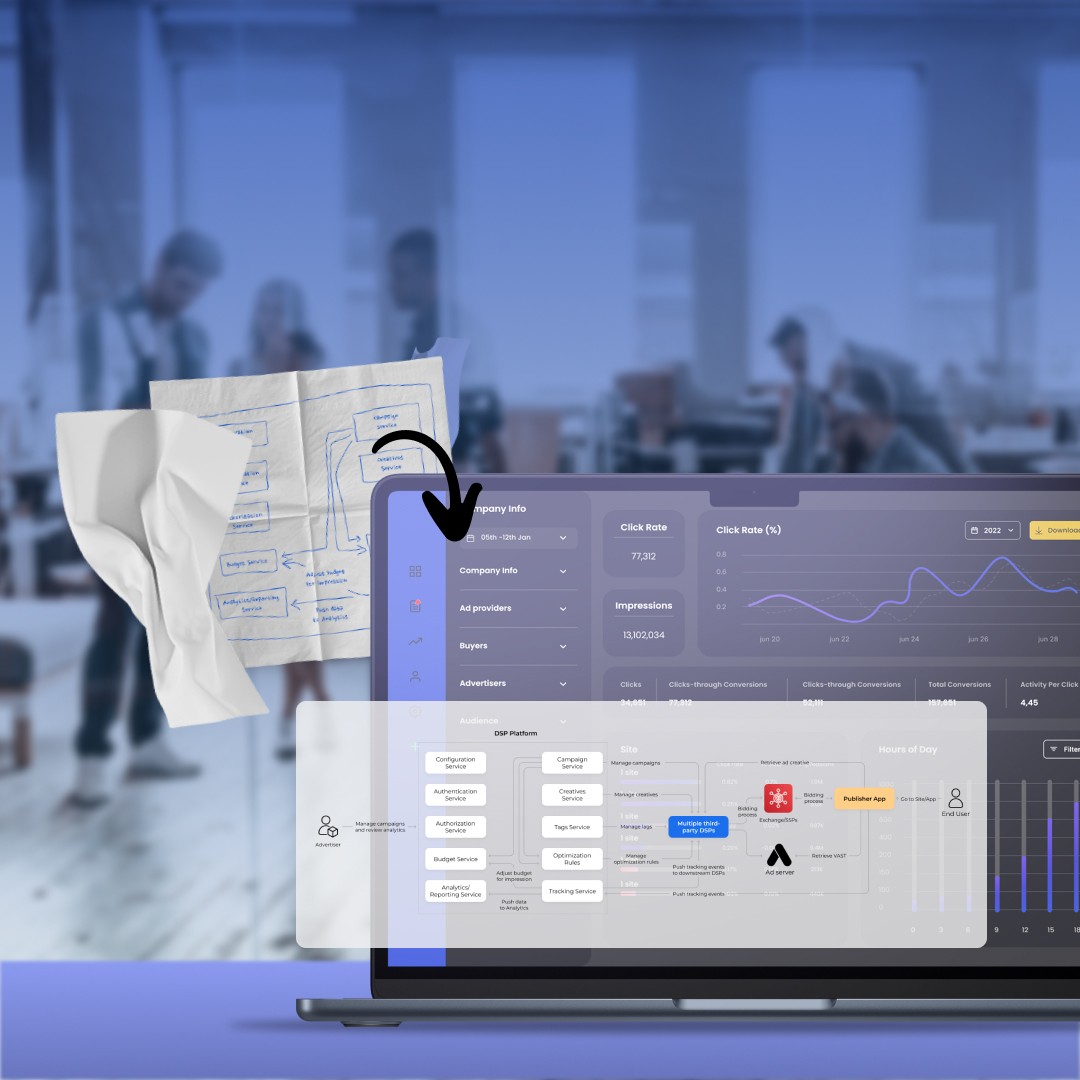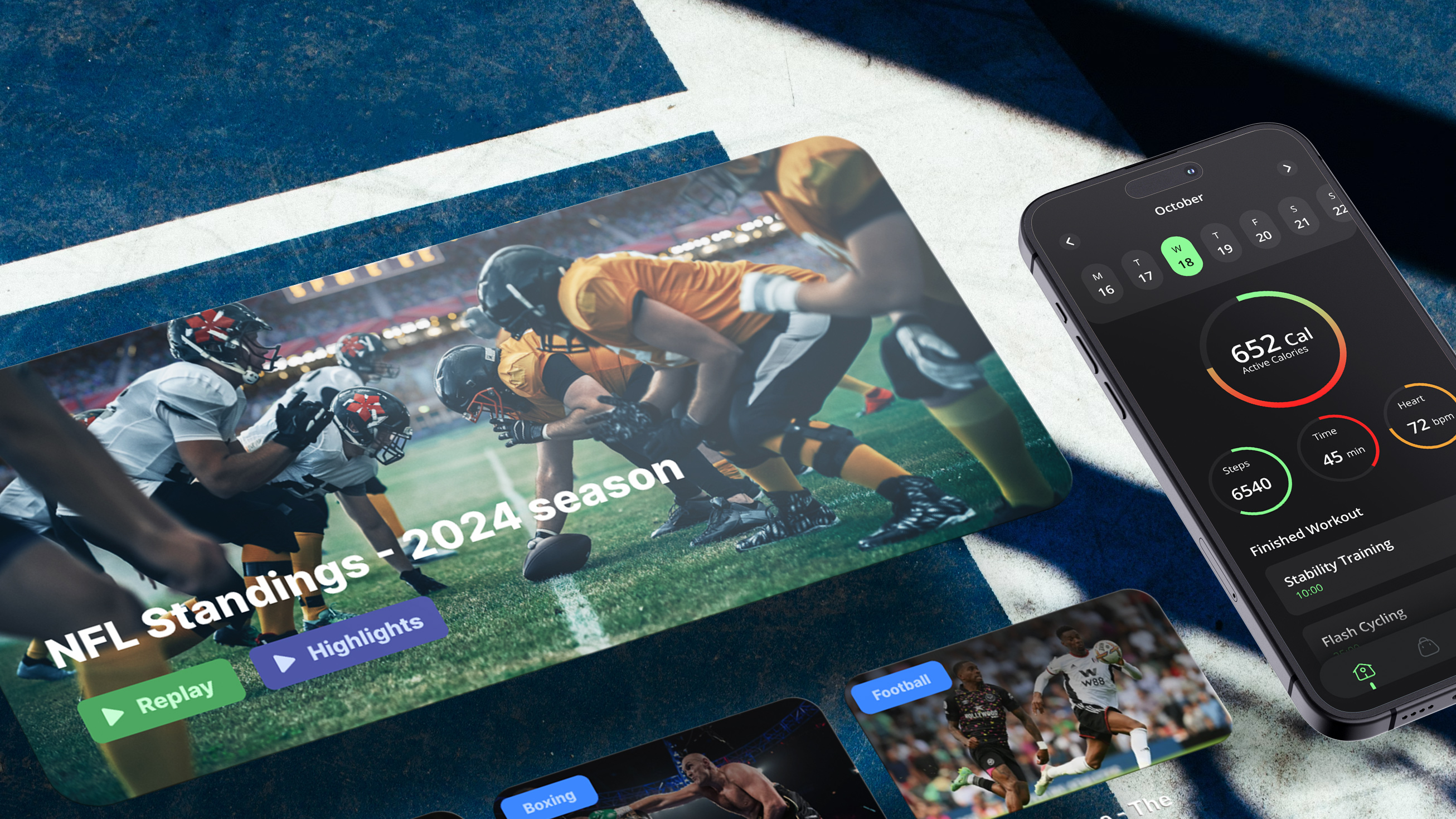Television is no longer confined to bunny-ear antennas or cable hookups — now it rides on the internet. Internet Protocol Television (IPTV) reimagines how we watch TV by delivering content through an online connection rather than traditional airwaves. If you’ve ever wondered, “What is IPTV?” or how IPTV works, you’re in the right place.
IPTV not only brings the freedom to watch live channels, on-demand shows, and recorded programs on any device; it also heralds a new era of viewer-centric entertainment. Let’s explore what IPTV means, how it operates, its standout features, and why this technology is rapidly reshaping the TV landscape. Then, we’ll highlight how businesses are harnessing IPTV’s potential and how you, too, can benefit from its vast possibilities.
What is IPTV and how does it work?
To better understand what IPTV is and how it works, let’s take a simplified look at the process. At its core, IPTV works more like streaming video on the web than traditional broadcast television. Instead of sending out signals that everyone picks up at once, an IPTV system streams content to each user individually over the internet (using the Internet Protocol).
Here’s how the process typically unfolds: content from providers (like TV networks or studios) is encoded and stored on servers, then sent out as data packets over broadband networks to the viewer’s device on demand. When you select a channel or a movie on an IPTV service, that request goes to the IPTV provider’s server, which then instantly delivers the video stream to you via your internet connection. It’s a two-way interactive communication — your device talks to the server, unlike old one-way cable broadcasts.

Most IPTV services use a set-top box or specialized app as the receiver. This device connects to your internet (through Ethernet or Wi-Fi) and handles the task of decoding and decrypting the video streams for display. Many telecom providers bundle these IPTV boxes with broadband — you plug the box into your router and TV, and it delivers channels via the internet instead of through cable lines.
Modern IPTV doesn’t require a dedicated box if you have a smart TV or streaming device; apps on Smart TVs, phones, or tablets can serve the same role as the set-top box, turning any screen into a television.
We build IPTV apps that perform
Fast streams. Seamless UX. Built to keep viewers hooked — and your business growing.
We’ll handle the tech. You lead the market.
The viewer interface (an on-screen menu or portal) allows you to browse live channels, pick a video from the on-demand library, or use features like pause and rewind.
Understanding the different types of IPTV services
IPTV takes a few different shapes, each geared toward a specific way of streaming content.
- Live IPTV (Live TV): This is the streaming of live television broadcasts in real-time over the internet. It mirrors the experience of traditional live TV — you join a program as it’s happening, be it news or a sports game. For example, an IPTV service can stream a live football match to your device via the internet, even if you don’t have cable. Many telecom companies offer packages of live IPTV channels delivered over fiber or DSL.
- Video on demand (VOD): In addition to live feeds, IPTV typically offers a library of videos you can watch at any time. This on-demand content works like Netflix or Hulu, but it’s provided by your IPTV service — movies, TV series, or catch-up episodes that you can start, pause, or replay whenever you want. VOD is not bound to broadcast schedules; it gives viewers complete control to choose what to watch and when. For instance, after finishing dinner, you might navigate to the IPTV on-demand section and stream yesterday’s episode of a show — no DVR needed.
- Time-shifted media (catch-up TV): Time-shifted IPTV lets you watch or re-watch recent broadcasts later, on your schedule. Think of it as a mix between live TV and VOD. The service automatically records certain live channels and makes them available for a limited time (say, 7 days) after the original airtime. This way, if you missed the 6 o’clock news or a live event, you can still go back and stream it. You can also pause or rewind the live stream — a feature often called time-shifting or live pause.For example, with an IPTV time-shift feature, you could rewind to the beginning of a soccer match that’s already in progress, or watch last night’s prime-time drama the next day at your convenience. It’s like having a cloud DVR that’s always running.

These different modes — live TV, VOD, and catch-up — illustrate the flexibility of IPTV. A real-world example is a service like BT TV in the UK or Verizon Fios in the US, where customers receive live channels (delivered via IP), a catalog of on-demand shows, and a catch-up feature for recently aired content, all through a single IPTV subscription.
Unlike over-the-top (OTT) streaming services, which travel over the open internet (Netflix, YouTube, etc.), IPTV is often provided over a managed network by telecom or cable operators, ensuring quality of service. This means your IPTV experience can be very smooth — akin to cable — because the provider prioritizes that traffic on their network.
In summary, how does IPTV work? — It uses your internet connection to fetch TV content from a server whenever you request it, enabling live and on-demand viewing with a level of interactivity and control that traditional TV simply couldn’t offer.
What are the key features and benefits of IPTV?
What makes IPTV so transformative? Below are some key features and benefits that set IPTV apart from traditional broadcasting, and why many viewers and operators are gravitating toward it:
- On-demand & flexibility: With IPTV, viewers are in charge. You aren’t tied to TV schedules — besides live streams, you can choose from vast on-demand libraries and watch what you want, when you want. Missed an episode? IPTV has you covered with catch-up TV or replay options. This on-demand access means higher viewer satisfaction because entertainment fits into your schedule, not vice versa.
- Interactivity & personalization: IPTV creates a two-way street: pause, rewind, and record live TV — features previously impossible with one-way broadcasts. Many IPTV systems also provide interactive on-screen menus and program guides.Because IPTV capitalizes on internet-based delivery, it’s infinitely flexible: from delivering interactive ads to integrating third-party apps in one environment. Thanks to specialized IPTV development services, providers can implement time-shifting, live pause, and advanced analytics — features that keep audiences tuned in and engaged.
- Multi-screen viewing: Ever wish you could start a movie on your TV, then continue on your tablet in bed? IPTV enables that. The content is delivered via the internet, so you can watch on multiple devices — your smart TV in the living room, your smartphone on the go, or your laptop in a cafe. Many IPTV providers allow simultaneous streams on different devices (see the next section on “connections”), so families can watch different shows on different screens under one account. The flexibility to enjoy TV anywhere, on any screen, is a huge perk in our mobile world.
- Wide range of content (global reach): Because IPTV isn’t limited by over-the-air frequencies or local cable infrastructure, it can offer a very wide selection of channels and content. Niche international channels, 24/7 specialty streams, or huge VOD catalogs — all can be part of an IPTV package. This means consumers get a richer array of entertainment options, from local news to foreign sports to exclusive on-demand series.For instance, an IPTV service can easily include a Bollywood movie channel or a Turkish news channel for expats, delivered over the same internet connection. It’s truly “worldwide” television.
- Quality and future-proof tech: Given a robust internet pipeline, IPTV can deliver high-quality video up to 4K (and beyond), often with less bandwidth usage than uncompressed broadcasts thanks to modern video codecs. Many IPTV systems use efficient streaming methods (like IP multicast for live channels) to send one stream to many viewers without clogging the network. And because the service is software-driven, adding new channels or features (say, an interactive widget or a new VOD category) is easier than in cable or satellite. IPTV is inherently adaptable — it can integrate with emerging technologies.For example, some IPTV providers are blending OTT apps (like Netflix or YouTube) into their interface, so users get a one-stop hub for all content. This adaptability makes IPTV a future-proof choice as viewing habits evolve.
- Advantages for providers: It’s not just viewers who benefit. Telecom and cable operators see IPTV as a more efficient, scalable way to deliver TV. They can manage it on the same network that provides internet and phone (converged services), potentially reducing infrastructure costs. IPTV also opens the door to new revenue streams: targeted advertising (since they know user preferences), premium interactive services, and flexible subscription models. It’s a win-win: viewers get more control and choice, while providers get a smarter delivery system.In fact, industry trends show IPTV steadily gaining ground on legacy TV. Hundreds of millions of people are switching to IPTV for their television needs. By 2029, analysts project over 412 million IPTV subscribers worldwide, reflecting how IPTV’s unique benefits are resonating in the market. (Case in point: in Western Europe, IPTV subscriptions surpassed satellite TV back in 2015 — a trend now expanding globally.)

- A mini case study: To illustrate the benefits, consider PCCW’s Now TV in Hong Kong, one of the world’s first big IPTV deployments. Now TV launched in 2003 and by mid-2007 had about 700,000 subscribers, reaching one-third of Hong Kong households. Why such success? Because it offered things cable couldn’t at the time: a la carte channel selection, interactive features, and multi-platform access. Viewers could watch on their TV or a mobile phone during their commute — a novelty back then.It also bundled broadband internet and IPTV together, creating convenience and good value. This early case showed that when viewers are given more choice and control, they respond enthusiastically. Today’s IPTV services build on those benefits with even more content and higher quality, but the core appeal remains the same: TV on the viewer’s terms.
In short, IPTV combines the vast content choice of the internet with the familiarity of the TV experience. It brings together live broadcasting, binge-worthy on-demand shows, and interactive capabilities into one platform. For anyone weighing it against traditional TV, the benefits above make a compelling case that IPTV is indeed a more modern, flexible, and engaging way to watch television.
IPTV connections meaning: practical tips for content distributors
Curious about IPTV connections’ meaning and how it impacts your service? Think of it like concert tickets — each ticket (connection) lets someone join the show (stream) at the same time. For content distributors, previous deciding how many tickets to issue and ensuring nobody sneaks without one is pivotal to delivering a smooth, high-quality experience.
Why concurrent streams matter?
Multiple concurrent connections can be a major selling point. Families or roommates love the freedom to watch different shows simultaneously — no more battles over the remote. But more connections also mean more bandwidth consumption and a bigger burden on your streaming infrastructure. Striking the right balance is key: you want to keep viewers happy without overloading your service or losing revenue to account sharing.
Balancing access and protection
- Set clear tiers: Allow 1, 2, or even 5+ simultaneous streams, but align each tier with a fitting price. This way you’re not giving away bandwidth for free.
- IP lock or not?: Some distributors “lock” subscriptions to one IP address to curb sharing outside the household. Others let users roam freely on any network but enforce concurrency limits. Choose an approach that works best for your audience and tech setup.
- Usage monitoring: Keep an eye out for suspicious patterns — like 10 streams playing on a plan that promises only 2. Automated flags or throttling can help maintain fairness.

Ensuring reliability behind the scenes
You might offer multiple connections, but can your infrastructure handle the load? Here’s how to keep those streams flowing:
- Robust bandwidth: Each HD stream typically needs 5 — 8 Mbps, while 4K might require 15 — 25 Mbps. Multiply that by the maximum concurrent connections you allow.
- Efficient video tech: Modern codecs (H.265/HEVC, AV1) squeeze down bitrates without sacrificing quality, letting you serve more viewers on the same bandwidth.
- Smart scaling: Load balancing, CDNs, and regional servers ensure viewers around the world get fast, uninterrupted streams — even during big events.
In the end, “IPTV connections meaning” boils down to delivering the right number of streams per subscription and backing it all with a sturdy infrastructure. When done right, you’ll give subscribers the freedom to watch across multiple devices — while safeguarding your service from bandwidth bottlenecks or unauthorized access. It’s all about offering plenty of virtual “tickets” to the show without letting the venue get overcrowded.
IPTV offers a radical departure from traditional TV by merging broadcast content with internet delivery, allowing viewers to watch live and on-demand shows on virtually any device. This flexible, interactive approach resonates with modern audiences, fueling the transformation outlined in How Traditional TV is Reinventing Itself — 3 Trends to Watch.
IPTV that does more than just stream
Upgrading your broadcast tech? Expanding into new markets? We build custom IPTV solutions that go beyond the basics — personalized, high-performing, and ready to scale.
























